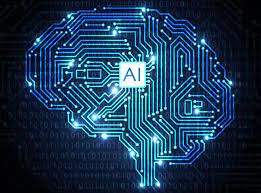Artificial intelligence is all around us. It plays an active part in our day to day life. Whenever we open our Facebook newsfeed, search in Google, obtain an Amazon product recommendation or book a trip online, AI lurks behind it.
Artificial intelligence refers to how a machine behaves as a current human model by understanding, interpreting, and learning from data using a specific algorithm. Artificially intelligent systems may recall patterns of human behavior and adjust to their requirements.
Let’s make sense of Artificial Intelligence (AI) and Machine Learning (ML) before going on.
Machine Learning (ML) includes teaching machines essential concepts using Big Data examples to make them understandable (in machine language). It is achieved by providing suitable algorithms for them.
How to learn AI?
Many companies use AI to improve their user experience, productivity, or success. That is why AI professionals are in enormous demand. Artificial intelligence learning (although not easy) is now quite accessible through various online AI courses and training programs. They are taught by the best AI professors, experts, and specialists.
They are often less costly than a traditional university course. Some courses are very extensive and provide an equivalent university degree program. Some are also free and well suited for an insight into AI’s world.
Top Artificial Intelligence (AI) Examples
Let’s look at the list of top 10 examples of AI (Artificial Intelligence) and how they work:
- Google’s AI-Powered Predictions: Google Maps can analyze the traffic movement speed at any time using anonymized location data from smartphones. Maps can easily include reported user traffic incidents, such as construction and accidents. Increased access to large volumes of data to its algorithms means that Maps can reduce travel by proposing the quickest routes to and from work.
- Face Detection and Recognition: Two AI applications, which are now part of our everyday lives, use visual filters on our faces when we take our images and use face ID to unlock phones. Intelligent machines sometimes coincide – and even go over and over often! Many aspects make human faces unique. Intelligent machines are taught to define facial (x, y, w, and h) co-ordinates, to mark landmarks (eyes, nose), and alignments across the face (geometric structures). It requires the human ability to identify many faces. Government buildings or airports often use face recognition for surveillance and defense.
- Email Spam Filters: Email spam filters use a machine learning and intelligence model to know what emails you don’t want or which emails may be risky to get into your inbox and then filter them out. But that’s not your inbox’s only AI activity. Google has recently launched a Smart Reply service, an AI service that generates short email responses based on how you have previously answered similar messages.
- Robots and driverless cars: Robots need to be self-sufficient and understand and manage the world around them implies that robotics and AI have a natural overlap. Although AI is only one technology used in robotics, AI helps robots migrate to new fields, including self-driving cars, delivery robots, and allows robots to acquire new skills.
- Video Games: For years, artificial intelligence has been part of video game platforms, but its implementation is increasingly sophisticated. In the Middle Earth games series, AI characters grow according to their interaction with the players. AI somehow fuels every video game you play today.
- Healthcare: Artificial intelligence turns out to be a healthcare game-changer that improves virtually all aspects of the industry, from robotic operations to private records safeguarding against cybercriminals. Medical care has been long suffering from steep medical costs and inadequate procedures. Artificial Intelligence provides a much-needed makeover for the malignant industry. The Pager app allows every user to chat with a nurse 24 hours a day and through video chat to speak to the doctor and receive prescriptions as needed.
- Finance – Fraud Prevention: How does a financial institution decide the transaction’s fraudulent nature? In most cases, the regular number of transactions is too large to check every transaction manually. The well-known credit rating companies FICO use neural networks to model fraudulent transactions to assess creditworthiness. Recent transaction frequencies, transaction size, and the type of retailer involved will influence the neural network’s final performance.
- Facebook: AI has become an integral feature of Facebook’s app, be it Messenger chatbots, algorithmic news feeds, photo Tagging recommendations, or ad targeting. The company’s Artificial Intelligence team recently trained an 85% accuracy image recognition model with billions of publicly-labeled Instagram images with hashtags. The approach is a breakthrough in the simulation of computer vision. Facebook uses artificial intelligence and human moderation mix to counter spam and violence. Facebook relies on artificial intelligence to support police, the world’s largest social network, with breakthroughs in image recognition and a doubling of AI science.
- Amazon: The King of e-commerce is Amazon. Amazon uses artificial intelligence in virtually every phase of its operation. Whether it be the companies’ suggestions about which goods to purchase, the robots that collect, sort, and dispatch products, or the web services that power the website itself. With a host of AI projects, Amazon has virtually redeveloped its artificial intelligence market.
- Netflix: The technology of Netflix is precisely based on the reactions of customers to films. It analyzes thousands of records to recommend films you like based on your past responses and film choices. By the year, as the dataset expands, this application gets more competent and knowledgeable. However, the only downside of technology is that most small label films go unknown as large named films are growing on the platform.
Final takeaway
The idea to create a modern computer science discipline was coined artificial intelligence in 1955. As the market for AI technology is demanding and flourishing, it quickly and dramatically changes the different fields of our everyday lives. Many start-ups and internet companies are competing to purchase them.
The artificial intelligence examples discussed here are entertainment and provide numerous tools on which we rely. The world of artificial intelligence is still developing, and many more inventions are yet to be made to reproduce human capabilities much more accurately.


















Be First to Comment